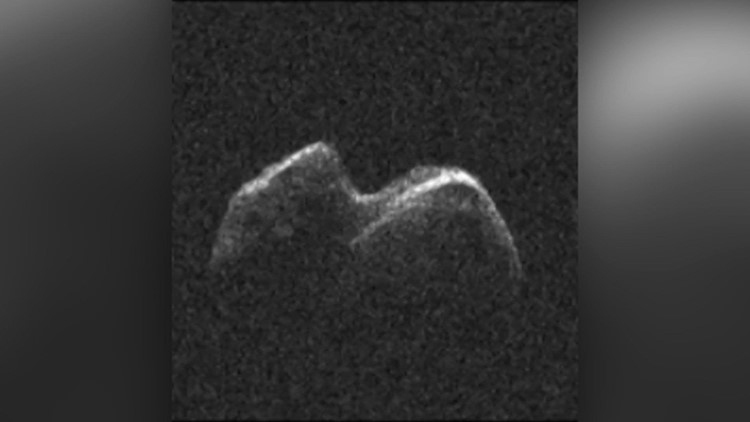A large asteroid is whizzing by Earth this week, and NASA has the images to prove it.
The space rock, known by the very dull name of 2014 JO25, was expected to safely fly by Earth on Wednesday night, according to NASA.
Radar images obtained by NASA a day earlier show a peanut-shaped asteroid that rotates about once every five hours.
“Although there is no possibility for the asteroid to collide with our planet, this will be a very close approach for an asteroid of this size,” the space agency said in a statement.
What size are we talking about?
Measurements indicate the asteroid is about 2,000 feet (650 meters) in size. That’s 670 yards (613 meters), or about the length of six NFL football fields.
And how close is “very close”?
This rock will come about 1.1 million miles (1.8 million kilometers) from Earth, NASA says. That’s about 4.6 times the distance from Earth to the moon. The moon, by the way, is about 239,000 miles (384,400 kilometers) from Earth.
While several small asteroids pass within this distance of Earth a few times a week, this is the closest by any known asteroid of this size or bigger in 13 years — since asteroid Toutatis in 2004.
Can you see 2014 JO25? Well, maybe. This asteroid has a reflective surface and you might be able to see it with a telescope.
“The asteroid will approach Earth from the direction of the sun and will become visible in the night sky after April 19,” NASA said.
If you don’t have your own telescope, you can watch the asteroid online.
Astronomers discovered 2014 J025 in … you guessed it … 2014. This will be its closest encounter with Earth for the last 400 years. NASA said telescopes around the world will be trained on it during the flyby to try to learn more about it.
Additional radar observations Thursday and Friday will hopefully provide better images, NASA said.
There was no word early Thursday on whether the space rock had whizzed past Earth.



